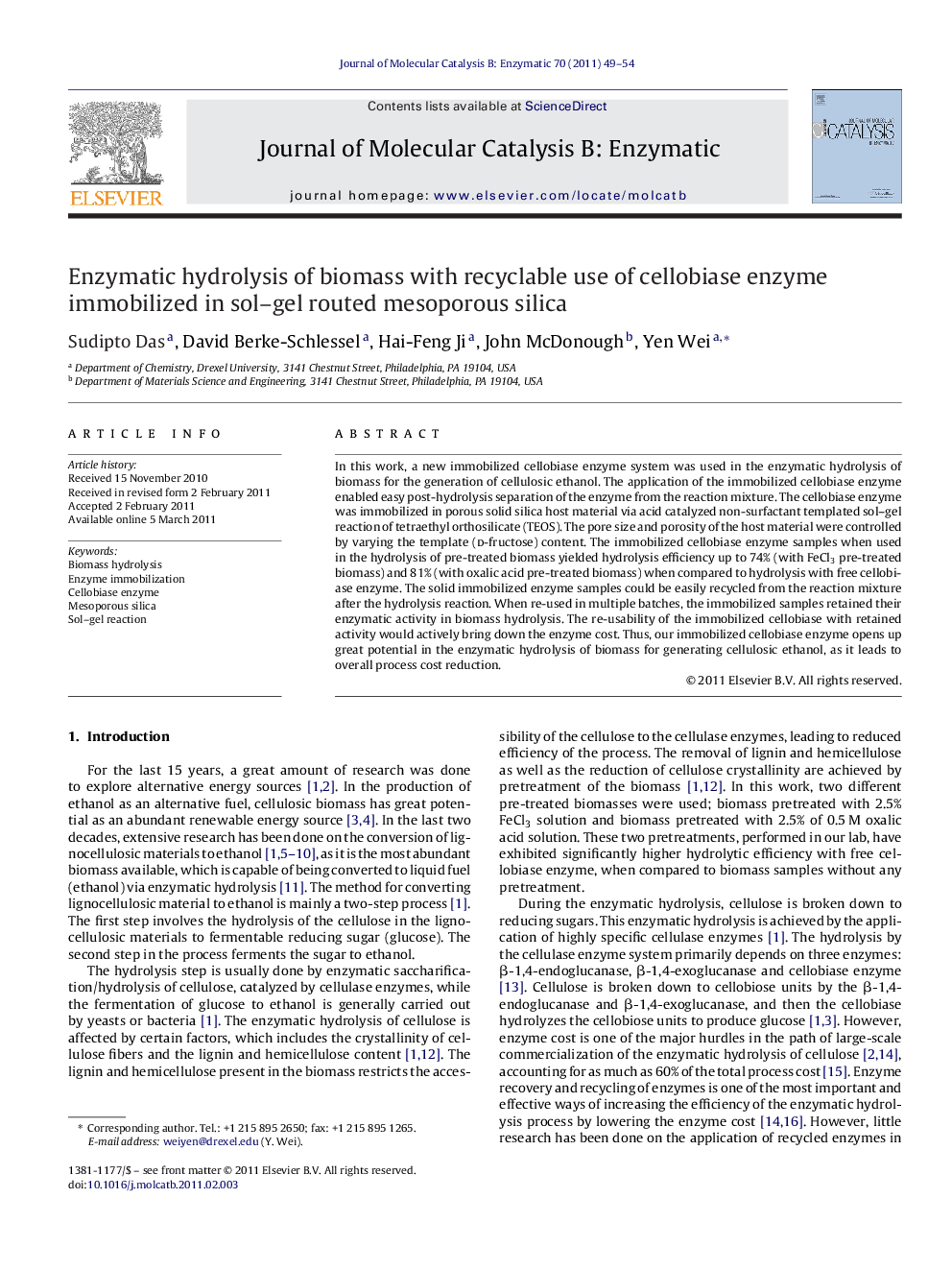| Article ID | Journal | Published Year | Pages | File Type |
|---|---|---|---|---|
| 70266 | Journal of Molecular Catalysis B: Enzymatic | 2011 | 6 Pages |
In this work, a new immobilized cellobiase enzyme system was used in the enzymatic hydrolysis of biomass for the generation of cellulosic ethanol. The application of the immobilized cellobiase enzyme enabled easy post-hydrolysis separation of the enzyme from the reaction mixture. The cellobiase enzyme was immobilized in porous solid silica host material via acid catalyzed non-surfactant templated sol–gel reaction of tetraethyl orthosilicate (TEOS). The pore size and porosity of the host material were controlled by varying the template (d-fructose) content. The immobilized cellobiase enzyme samples when used in the hydrolysis of pre-treated biomass yielded hydrolysis efficiency up to 74% (with FeCl3 pre-treated biomass) and 81% (with oxalic acid pre-treated biomass) when compared to hydrolysis with free cellobiase enzyme. The solid immobilized enzyme samples could be easily recycled from the reaction mixture after the hydrolysis reaction. When re-used in multiple batches, the immobilized samples retained their enzymatic activity in biomass hydrolysis. The re-usability of the immobilized cellobiase with retained activity would actively bring down the enzyme cost. Thus, our immobilized cellobiase enzyme opens up great potential in the enzymatic hydrolysis of biomass for generating cellulosic ethanol, as it leads to overall process cost reduction.
Graphical abstractFigure optionsDownload full-size imageDownload as PowerPoint slideResearch highlights► Immobilized cellobiase enzyme in hydrolysis of biomass (cellulose) for generating cellulosic ethanol. ► Up to 81% hydrolysis efficiency of immobilized cellobiase, with respect to free cellobiase enzyme. ► Immobilized cellobiase enabled recycling and re-use of the enzyme.
